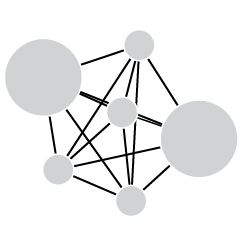Network of Supermarket Chains
When I was younger, I’d wonder why the ads for many grocery chains looked the same. The products were the same, the sales were the same, and ad design was the same. It never occurred to me that all the stores we went to were owned by the same company.
Here’s the current landscape of supermarket parent companies and their subsidiaries — national chains, regional, local, co-ops, specialty, ethnic, and discount.
National Chains
With thousands of locations across the United States, a handful of national chains rule the land. Walmart, Target, and Costco sell stuff other than groceries, but many people get most of their food from there, so I’m including them. Parent companies are bolded.

Regional Chains
Fewer locations means less geographic coverage, but there are more chains to compensate.

Local Chains
The local chains stay private, so instead of hierarchy, you see independent bubbles.

Cooperatives
While there are not as many co-ops as major chains, they remain common in some areas.

Specialty Chains
I thought there would be a lot more Trader Joe’s locations, but maybe I just live in a target market.

Ethnic Chains
Like the local chains category, ethnic chains tend function independently.

Discount Chains
There are a lot of dollar stores. Although they’re probably not a main grocery source for most people.

Notes
This of course is not every store in the country. I started with the list of supermarkets on Wikipedia and then subset to chains with at least five locations.
I made the charts in R and edited in Illustrator.
The weird part for me: As an experiment, I used Claude to collate data on the first pass. There were small mistakes with relationships between parents and subsidiaries, but I think I fixed those. Some of the counts were a few locations off, because of the time the data was collected, mostly through each store’s online locator. I think I fixed those too. But please let me know if you see anything weird that jumps out with your local store.


